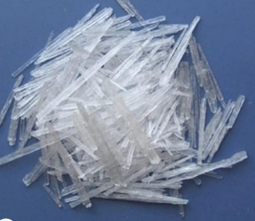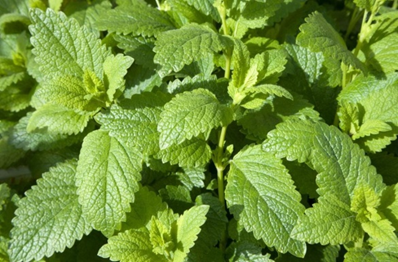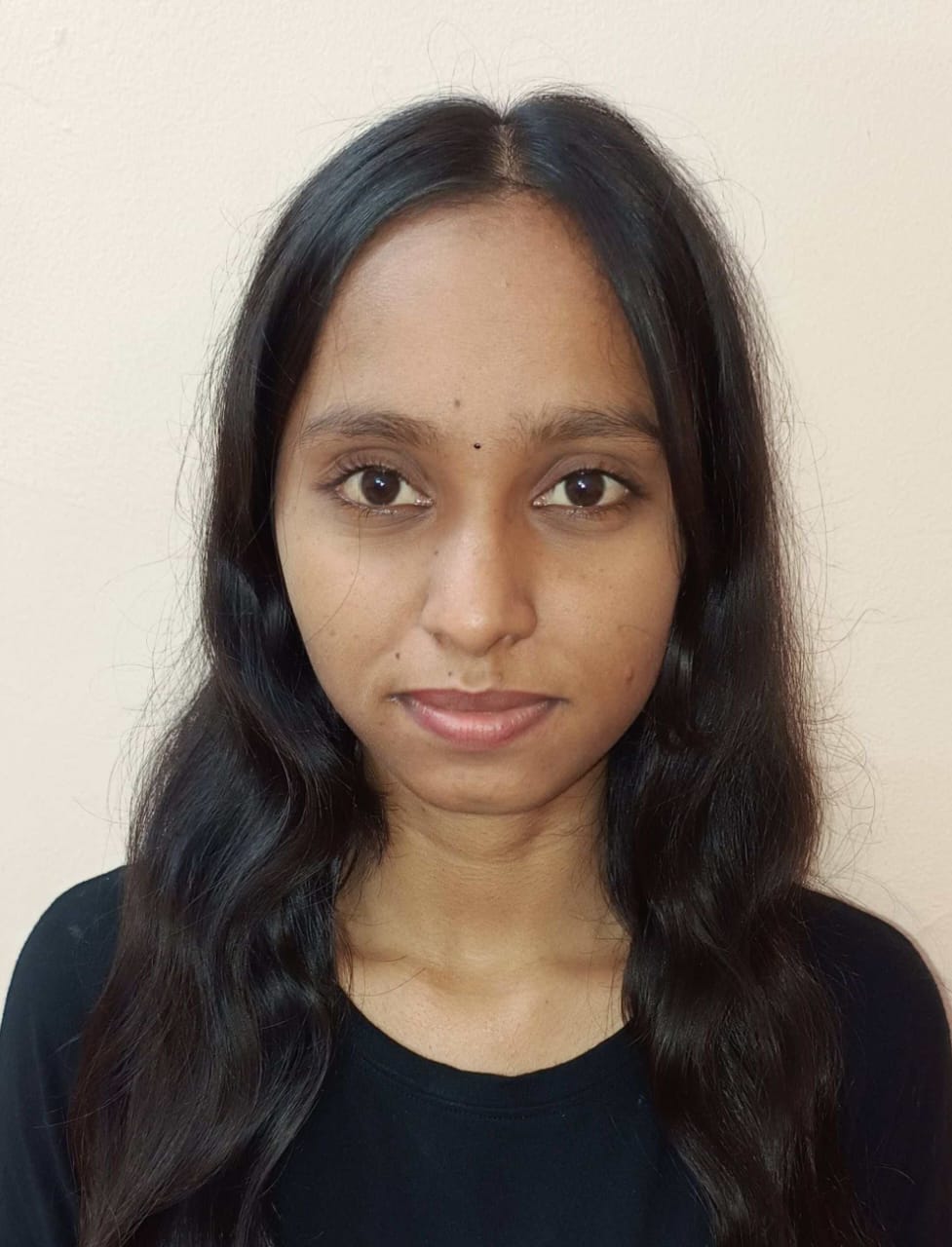Abstract
The aim of this research is to study the anxiolytic properties of Asamantara (spearmint) and Melissa officinalis (lemon balm). In this research an aromatherapy fragrance spray is prepared by using Asamantara and Melissa officinalis. Aromatherapy can effectively modify emotional responses and stress-related memories. Certain fragrances, for instance, have the ability to initiate a relaxation response, thereby diminishing sensations of stress and anxiety. Essential oil (EO) molecules can affect the hypothalamus, autonomic nervous system and endocrine system, improve peripheral blood circulation, regulate blood pressure, pulse and respiration, and ultimately reduce anxiety. Calming scents stimulate the olfactory system, which sends signals directly to the brain's limbic system. This region controls emotions and memory, allowing certain aromas to evoke relaxation and reduce stress. A genius way to deal with anxiety is to use scent to uplift, unwind, or soothe. Lemon balm may be effective in improving anxiety and depressive symptoms, particularly in the acute setting. Possible mechanisms could be that pleasant ambient odors have a favorable impact on mood by activating positive associations stored in memory, Melissa officinalis, a perennial plant in the family Lamiacae, known as lemon balm, is a popular herb with multiple therapeutic properties. Significant content of active compounds (including rosmarinic acid) is reported to be responsible for the broad health effects of lemon balm. Melissa officinalis has antioxidant, anti-inflammatory, antimicrobial and antidepressant activities. It can be used in the treatment of sleep disorders, neurodegenerative diseases and obesity as well as in ophthalmology, gynaecology, oncology, gastroenterology and cardiology. Additionally, the leaves of this spearmint plant contain menthol, which has a relaxing, sedative effect on the body. It’s believed that spearmint promotes relaxation and alleviates stress by interacting with GABA receptors in your brain. GABA is a neurotransmitter involved in reducing nerve activity.
Keywords
Asamantara, lemon balm, spearmint.
Introduction
Aromatherapy is commonly used to treat a wide variety of mental and physical problems from stress and anxiety, to headaches and digestive issues. The essential oils used in this practice trigger messages to be sent to your brain’s limbic system, which controls your emotions, memory and how we learn. Aromatherapy is the practice of using essential oils for therapeutic benefit. Aromatherapy has been used for centuries. When inhaled, the scent molecules in essential oils travel from the olfactory nerves directly to the brain and especially impact the amygdala, the emotional center of the brain. Essential oils can also be absorbed by the skin. Aromatic molecules can pass through the nasal cavity and the skin to the central nervous system and human brain, so that a desired response of human body is stimulated. Aromatherapy has been shown both medically and psychologically as having a positive significant effect. Research has indicated that aromatherapy is able to reduce blood pressure and heart rate as well as increase the activity of the parasympathetic nervous system. Odors have long been known to be capable of altering the emotional state of humans. Physiological and psychological effects of essential oils have been acknowledged in folk medicine and aromatherapy for a long time.
Anxiety:
Anxiety is a psychological and physiological state characterized by Cognitive, somatic, emotional, and behavioral factors. These factors combine to create an unpleasant feeling that is typically associated with fear, worry or uneasiness. Without an identifiable triggering Stimulus, anxiety is a generalized mood state. In fact, it is distinguished from fear, which occurs in the presence of an external threat. As such, Anxiety is the result of threats that are perceived to be uncontrollable or unavoidable whereas fear is related to the specific behaviors of Avoidance and escape.
Depression:
Depression is a common affective disorder of mood recognition disturbances of thought or cognition. It is the most common affective Disorder which is accompanied by delusions and hallucination. In This disease condition, the neurotransmitters levels such as dopamine, Acetylcholine, nor epinephrine etc., in the brain are increased.
The symptoms of this disease are of two types:
- Biological Symptoms: retardation of thought, loss of libido, sleep disturbance and loss of appetite.
- Emotional Symptoms: feelings of guilt, loss of motivation, Ugliness etc. There are 2 types of depressive syndrome e.g.,
- Unipolar Depression: mood swinging always in the same direction.
- Bipolar Depression: depression alternates with mania.
Melissa officinalis (Lemon balm) is herbal medicine that has traditionally been attributed with memory-enhancing properties, but which is currently more widely used as a mild sedative and sleep aid. In a previous study it was demonstrated that a commercial Melissa extract led to dose-specific increases in calmness, and dose-dependent decrements in timed memory task performance. Lemon balm may be effective in improving anxiety and depressive symptoms, particularly in the acute setting. Melissa officinalis, a perennial plant in the family Lamiacae, known as lemon balm, is a popular herb with multiple therapeutic properties. Significant content of active compounds (including rosmarinic acid) is reported to be responsible for the broad health effects of lemon balm. Melissa officinalis has antioxidant, anti-inflammatory, antimicrobial and antidepressant activities. It can be used in the treatment of sleep disorders, neurodegenerative diseases and obesity as well as in ophthalmology, gynaecology, oncology, gastroenterology and cardiology.
Aim and Objective
Aim: Formulation and evaluation of antianxiolytic aroma spray from asamantara and lemon balm.
Objective:
1. To formulate and evaluate the anxiolytic spray
2. To study the physiochemical properties of herbal Spray formulation
3. To study the anxiolytic activity of herbal spray
4. Develop the herbal spray formulation was stable and good quality.
Plan of Work:
- Selection of Plant
- Material and Method
- Preparation of Plant Extract
- Preparation of Herbal Spray
- Evaluation parameters
- Result and discussion
- Conclusion
Plant Profile
- Spearmint:

Scientific Name: Mentha Spicata
Taxonomy classification
- Kingdom: Plantae
- Division: Magnoliophyta
- Class: Magnoliopsida
- Order: Lamiales
- Family: Lamiaceae
- Genus: Mentha
Uses:
Culinary: Spearmint is widely used as a culinary herb, adding flavor to dishes such as salads, sauces, beverages (like mint tea), and desserts.
Medicinal: It has been traditionally used for its medicinal properties, including aiding digestion, relieving nausea, and soothing headaches.
Aromatherapy: Spearmint essential oil is used in aromatherapy for its refreshing and invigorating scent, often to promote mental clarity and relieve stress.
Cosmetic: Spearmint extracts are used in skincare products for their cooling and cleansing properties.
- Lemon balm:

Scientifically known as Melissa officinalis, belongs to the kingdom Plantae, the division Magnoliophyta (Angiosperms), the class Magnoliopsida (Dicotyledons), the order Lamiales, the family Lamiaceae (Mint family), and the genus Melissa.
Taxonomy classification:
- Kingdom: Plantae
- Division: Magnoliophyta
- Class: Magnoliopsida
- Order: Lamiales
- Family: Lamiaceae
- Genus: Melissa
- Species: officinalis
Uses:
- Culinary
- Medicinal
- Aromatherapy
- Cosmetics
- Insect Repellent
- Flavoring
MATERIAL AND METHOD
- Materials:
- Essential oils: Bacillus officinalis, spearmint
- Distilled water
- Glass spray bottle (preferably amber or cobalt blue to protect the oils from light)
- Optional: Solubilizer (to disperse essential oils in water)
- Method:
- Choose Essential Oils: Select essential oils known for their calming and mood-stabilizing properties. Bacillus officinalis spearmint.
- Measure Ingredients: Depending on the size of your spray bottle, determine the number of drops of each essential oil. Adjust the ratios based on personal preference and sensitivity to scents.
- Mixing: Add the essential oils to the glass spray bottle. By using the solubilizer, add it now to help the oils disperse evenly in the water. Then, fill the bottle almost to the top with distilled water
- Shake Well: Close the bottle tightly and shake well to mix the ingredients thoroughly.
- Labeling: Label the bottle with the name of the blend and the date of creation.
- Usage: Shake the bottle before each use, then spray the aromatherapy mist around your space or onto your pillow before bedtime or during moments of stress or mood swings.
- Storage: Store the spray bottle in a cool, dark place to preserve the quality of the essential oils.
- Formulation Table:
The composition of herbal spray prepared from powered extract of tulsi and menthol leaves code Table F1, F2 and F3 is tabulated in table 1.

Table 1: Composition of Spray
- Physical Appearance:
Physical parameter such as colour, odour and consistency
Colour: Colour of the formulation was checked by visual inspection.
Odour: The odour of the formulation by olfactory sensation.
Consistency: The consistency of formulation was checked by applying on skin.
- Measurement of pH:
The pH of herbal spray formulations were determined by using digital pH meter.
- Homogeneity:
All developed spray formulations were tested for homogeneity by visual inspection after the spray
have been set in to the container. They were tested to check presence and appearance of any aggregate.
Results and Discussion:
Formulation and evaluation herbal spray was prepared.
It acts on excessive sweat producing gland by minimizing the sweat and produce cooling effect by stopping the irritation which occurs on plam.
Observation Table:

CONCLUSION
The data presented in the study, it was demonstrated that the developed herbal spray formulation possess significant, therapeutically efficacious, suitable vehicle for drug delivery in low cost but definitely with high potential. Developed new herbal spray formation is suitable for palm hyperhidrosis treatments. Occimum Sanctum Linn was effective for hyperhidrosis in terms of reduction of symptoms of hyperhidrosis. Further clinical trials comparing this spray against other treatment options are recommended.
REFERENCE
- Nem kumar Jain,et.Al, formulation and evaluation of polyherbal aqueous spray from occimum sanctum extract for plam sweating (2020). In this study spray was prepared using alcoholic extract of and neem leaves and aqueous extract of aloe. Antiperspectic study of formulation showed excellent efficacy against the primary.
- Ruchita sing,et.Al, formulation and evaluation of Harbal spray (2020) In this study Harbal spray formulations was prepared by using menthol leaf extract, tulsi extract, 934, propylene glycol, proply paraben, triethenolamine and required amount of distilled water.
- Shital Rajad,et.Al, formulation & evaluation of posuppresse hyperhidrosis cream containing Bombax ceiba thorn extract (2022). In this study harbal gel employing tulsi leaf and bombax Ceiba thorn extract shamimin, and antibacterial components found in bombax Ceiba linn., suppresse antifungal, antibacterial infection of excessive sweating.
- Vani Madaan,et.Al, Herbal Hyperhidrosis Spray (2022). In this study The natural herbs are leaf extract of occimum sanctum linn, leaf extract of neem, leaf extract of min, leaf extract of menthol piperita where dried and by using shoxlet method.
- John M. William et. Al, formulation and evaluation of Herbal aerosol (2023). In this study aerosol formulations prepare with proppelant 100m, propynl and tea tree oil presented decend homogenecity, no skin irritations, good stability.
- Treatment options for hyperhidrosis Hobart W Walling, Brian L Swick American journal of clinical dermatology 12, 285-295, 2011.
- Treatment of hyperhidrosis Lewis P Stolman Dermatologic clinics 16 (4), 863-869, 1998.
- Hyperhidrosis treatments in hidradenitis suppurativa: A systematic review Terri Shih, Katrina Lee, Justine R Seivright, Devea R De, Vivian Y Shi, Jennifer L Hsia Dermatologic Therapy 35 (1), e15210, 2022.
- Treatment of primary hyperhidrosis JOHN W WHITE Jr Mayo Clinic Proceedings 61 (12), 951-956, 1986.


 Madhavi Kankute*
Madhavi Kankute*
 Tejaswini Dhawale
Tejaswini Dhawale




 10.5281/zenodo.12731507
10.5281/zenodo.12731507